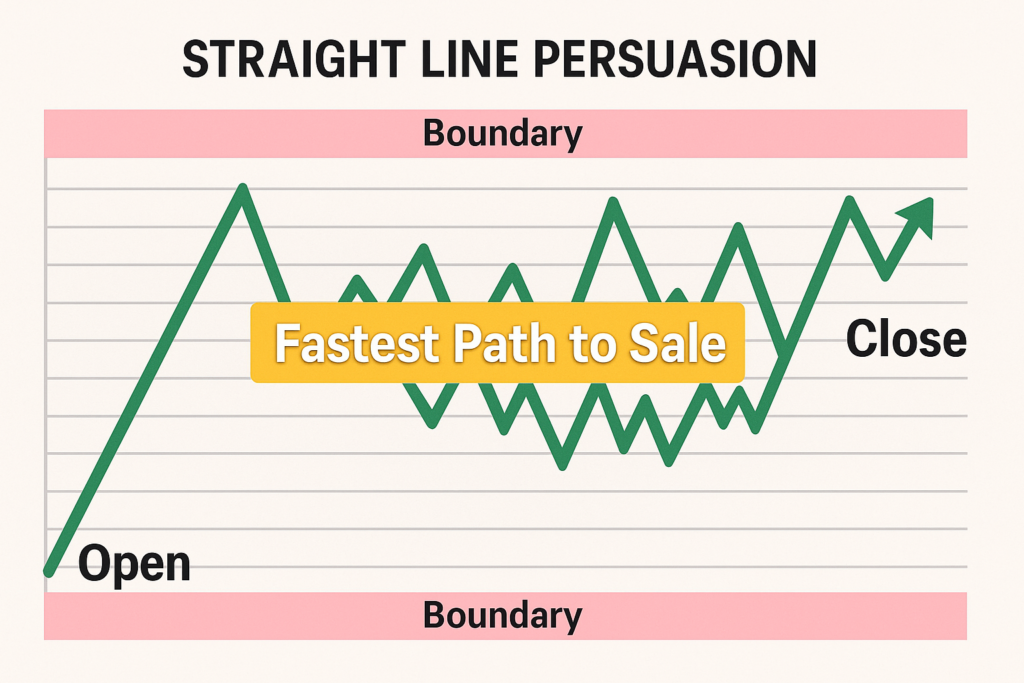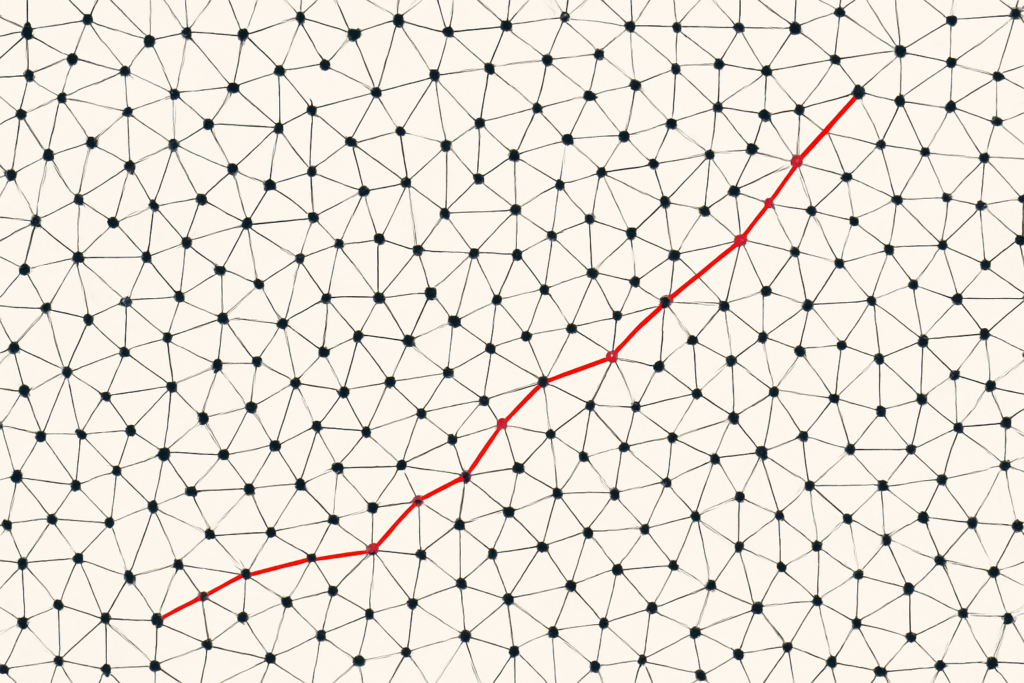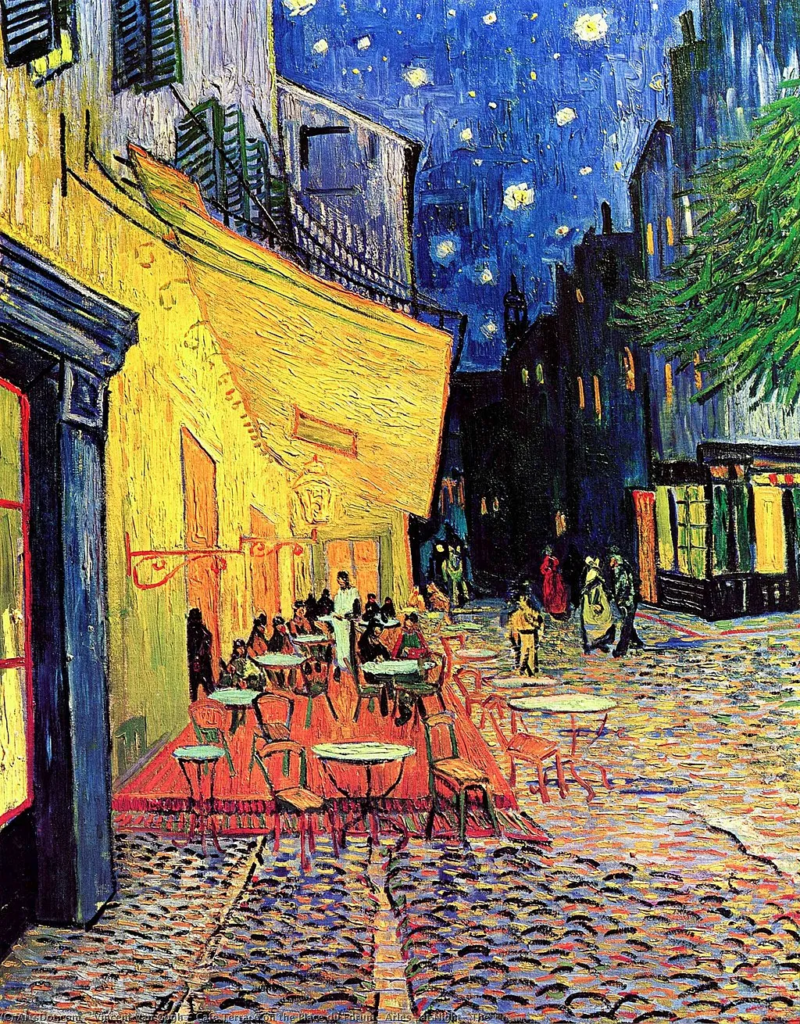
The straight line method was created by Jordan Belfort.
It is used to take a person from their current state to a desired outcome.
That outcome could be a sale, agreement, number, or decision.
The method begins with clarity about where you are and where you want to go.
You then draw an imaginary straight line between those two points.
The entire interaction is meant to travel across that line without drifting.
Every word, tone, and action must move the person closer to the final point.
You are not there to explore. You are there to direct.
Think of it like standing at one end of a rope.
The person you’re speaking to is standing on the other end.
You pull them toward you, bit by bit, with intention.
If they walk off the rope, your job is to guide them back on.
Let’s say you’re selling a course over Instagram.
You reach out to someone who liked your story.
You don’t open with “want to buy my course.”
You ask something that opens a conversation.
They reply, maybe with interest, maybe with hesitation.
You don’t just answer—you steer.
You figure out what’s holding them back.
You isolate the problem and remove it.
Then you bring the energy back to the main path.
This is what the straight line does.
It treats conversation like controlled movement.
You build trust first, because they won’t buy without it.
You establish the value of your offer, because belief must be present.
You create urgency, because action only happens under pressure.
All three must be in place—trust, belief, and urgency.
If any one is missing, the outcome will not happen.
So your job is to create all three during the conversation.

After learning about the straight line method, I began to see the world differently.
I started seeing everything as a system of nodes.
Each node is a situation, outcome, or state that already exists.
Life contains billions of such nodes, all fixed, all real.
Where you are right now is one node.
Where you want to go is another node.
But the only way to move between them is through conversion.
Every node is reached through action, not chance.
Even when you land at a place you didn’t want, it still came from conversion.
Your own behavior created the shift from one node to another.
This means conversion is always happening.
But the question is—did you convert deliberately, or did it happen by drift?
If you do not act deliberately, you will not reach your target node.
You will end up at some other node entirely.
You might have had a clear goal.
You might have wanted a specific outcome.
But without focused conversion, that outcome never arrives.
Because nodes are fixed, but your path is not.
And without deliberate movement, the system doesn’t guide you where you want to go.
It simply puts you at the next node your actions pushed you toward.
This is how people drift.
They keep converting, but not toward anything they intended.
They land in places they didn’t choose, living lives they never aimed for.
The conversion happened, but it was uncontrolled.
That is the cost of moving on autopilot.
You don’t end up late. You end up somewhere else.
So the only way to reach a specific node is to convert toward it on purpose.
You must know where you are.
You must define the next node you want.
And you must build a straight line between those two points.
Every step forward must follow that line.
Every decision must reinforce the direction of that line.
That’s how the system stabilizes.
That’s how you reach outcomes that match your intent.
Because in this model, outcomes are not rewards.
They are destinations.
And only straight-line conversion gets you there.
Each time you move from one node to another, you have to convert.
That single conversion step is never the same for everyone.
Even when the starting and ending nodes are identical, the path taken is not.
What you did, how you did it, what you felt while doing it—that’s what creates the difference.
That is why two people can land on the same outcome and still live different stories.
Because the experience is not shaped by the node itself.
It is shaped by how you converted to it.
The structure is shared. The conversion is yours.
That is what makes life feel personal.
This feels like deja vu
I have explore this same concept in another article
In A Life Full of Stories, I wrote about how life changes when you move between place, people, script, and vibe. That article was about what we see on the surface. This one goes deeper. I now see life as a system of fixed nodes. These are outcomes, situations, and states that already exist. To move from one to another, you have to convert. That conversion is what creates your experience. And that experience gives you the stories to tell.
Example

Node A: Total isolation
You land in a new country
No clients, no network, no momentum
Node B: Known face
You attend a founder meetup
You talk, listen, share your idea
People now know what you’re building
Node C: Trusted peer
You follow up
You meet for coffee
You help someone solve a real problem
You’re seen as someone who acts
Node D: Business collaborator
You make a small offer
They say yes
You deliver
Now there’s trust and real movement
From A to D
One straight line
Each node earned through action